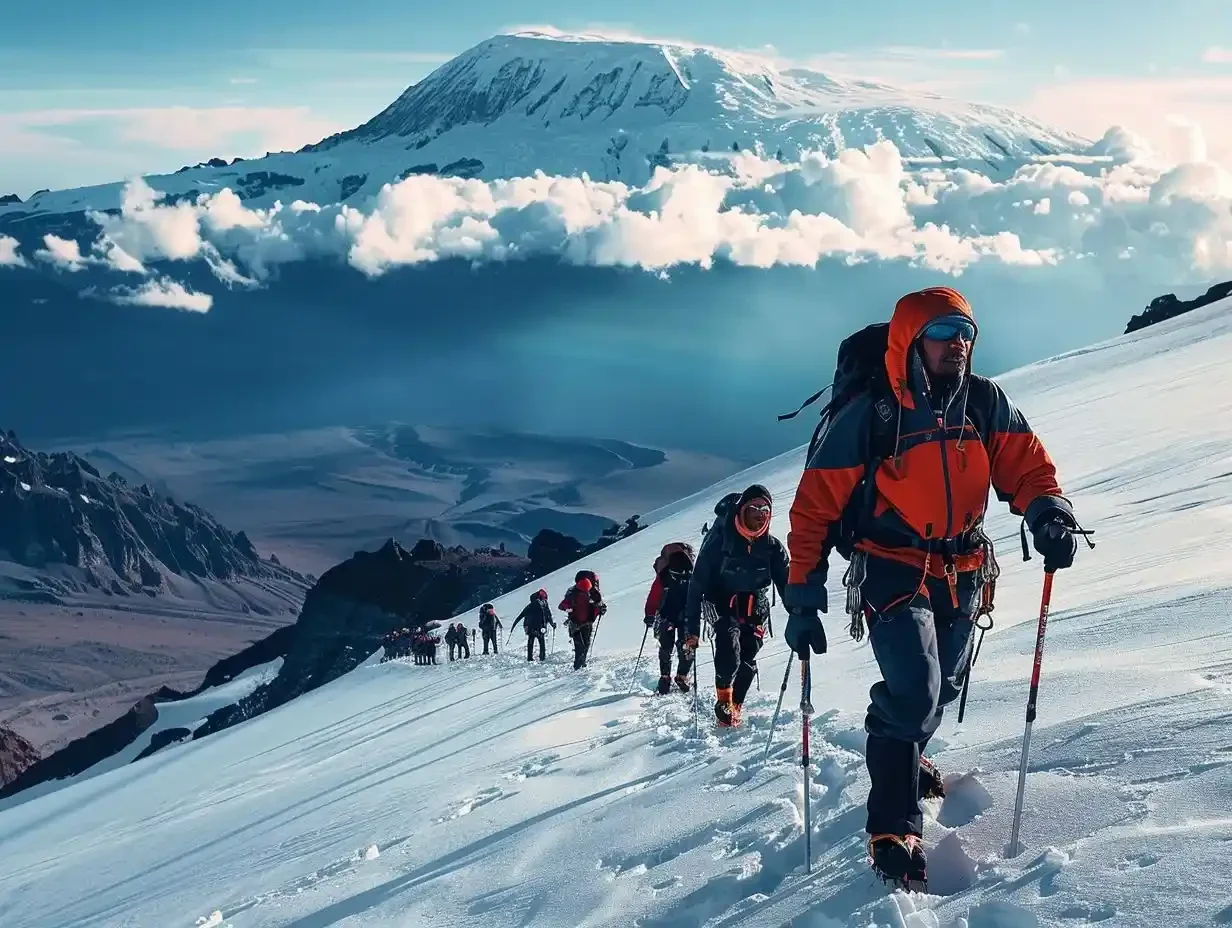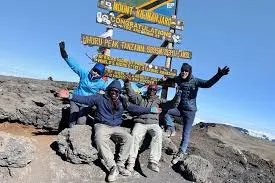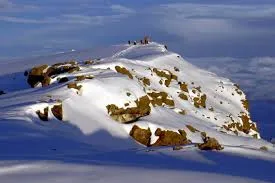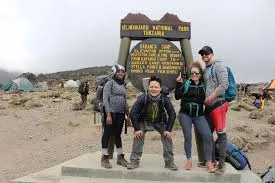Trekking Poles: Are They Necessary on Kilimanjaro?
Trekking poles aren’t mandatory on Kilimanjaro, but they’re highly recommended. They can make a big difference on Kilimanjaro by reducing strain on your knees and improving stability on uneven terrain. They help maintain balance during steep ascents and descents, distribute weight more evenly, and can even improve your overall endurance. When choosing poles, look for lightweight, adjustable options with comfortable grips and durable tips suitable for rocky and muddy surfaces. Below is a practical guide on using trekking poles effectively for your Kilimanjaro climb, designed to help you hike safely and comfortably with Capable Africa Tours.
Plan Your Kilimanjaro Trek Now
Why Use Trekking Poles on Kilimanjaro?
Using trekking poles on Kilimanjaro can greatly reduce strain on your knees and joints, especially when going uphill or downhill. They help you keep your balance on uneven ground, offer extra support in slippery or rocky areas, and help you maintain a steady pace to save energy. Adjust the poles to the right height and use the wrist straps correctly for the best results. At Capable Africa Tours, we've seen how poles improve climber performance. Here’s why they’re strongly recommended:
Benefits of Trekking Poles
- Reduced Joint Strain: Poles absorb 20–25% of the impact on knees and hips, especially during descents on routes like Machame or Marangu.
- Improved Stability: Rocky, muddy, or snowy trails are common on Kilimanjaro. Poles provide extra points of contact for balance.
- Enhanced Endurance: By distributing effort to your upper body, poles reduce leg fatigue over 6–9 day treks.
- Confidence on Steep Terrain: Poles give beginners and seasoned trekkers alike more control on challenging sections like Barranco Wall.
- Support at High Altitude: At 15,000+ feet, where balance can falter, poles help maintain stability.
Trekking Poles Impact
| Metric | With Trekking Poles | Without Trekking Poles |
|---|---|---|
| Knee Impact Reduction | Up to 25% | 0% |
| Balance Improvement | 30–40% more stability | Baseline |
| Fatigue Reduction | 15–20% less leg strain | Baseline |
| Descent Speed | 10–15% faster | Baseline |
Choosing the Right Trekking Poles for Kilimanjaro
To choose the right trekking poles for Kilimanjaro, look for lightweight, adjustable poles that have comfortable grips and durable tips made for rocky and uneven ground. Consider poles with shock-absorbing features to lessen the strain on your knees during long climbs and descents. Practice using them before your trek to find the right length and rhythm for your stride. Here’s a detailed guide to help you choose:
Key Features to Look For
- Weight: Opt for poles weighing 500–700g per pair to minimize fatigue.
- Adjustability: Telescopic poles (adjustable from 65–135cm) suit varying heights and terrains.
- Material: Aluminum for durability or carbon fiber for lighter weight.
- Grip: Cork or foam grips for comfort and sweat absorption; avoid plastic.
- Tip: Carbide tips for grip on rocks; include rubber tips for flat sections.
- Locking Mechanism: Lever locks are faster and more reliable than twist locks.
Top Trekking Pole Recommendations
| Brand/Model | Weight (per pair) | Material | Price Range | Best For |
|---|---|---|---|---|
| Black Diamond Trail Ergo Cork | 510g | Aluminum | $130–150 | All-around use |
| LEKI Micro Vario Carbon | 480g | Carbon Fiber | $200–220 | Lightweight seekers |
| Cascade Mountain Tech | 580g | Aluminum | $40–60 | Budget climbers |
Pro Tip: Capable Africa Tours offers trekking pole rentals, so you can save on cost and luggage space. Contact us to reserve yours!
See Trekking Poles in Action on Kilimanjaro
Watch how trekking poles enhance stability and comfort on Kilimanjaro’s trails. Capable Africa Tours’ expert guides share tips to prepare you for the climb.
How to Use Trekking Poles Effectively on Kilimanjaro
To use trekking poles effectively on Kilimanjaro, adjust the length so your elbows are at roughly a 90-degree angle while walking. Plant the poles firmly with each step to improve stability on uneven terrain and reduce strain on knees and joints. Use a rhythmic, alternating motion with your arms and legs to maintain balance and conserve energy. On steep ascents, shorten the poles slightly to help push upward, and on descents, lengthen them to support controlled braking. Below is a practical guide on how to use trekking poles to enhance your stability and endurance during your 6–9 day trek with Capable Africa Tours.
- Adjust Length: Set poles so your elbows form a 90-degree angle when standing on flat ground. Shorten for ascents, lengthen for descents.
- Use Two Poles: Dual poles provide balanced support and reduce strain on both sides of the body.
- Proper Technique: Plant poles opposite your steps (e.g., right pole with left foot) for a natural rhythm.
- Grip Lightly: Avoid tight grips to prevent hand fatigue; use wrist straps for support.
- Adapt to Terrain: On loose scree, plant poles firmly; on rocks, use tips to probe for stability.
- Practice Beforehand: Test poles on local hikes to build confidence and refine technique.
Trekking Poles Across Kilimanjaro Routes
Using trekking poles on Kilimanjaro can reduce strain on your knees, improve balance on uneven terrain, and help maintain a steady pace during long ascents and descents. Adjust the poles to your height, keep your elbows slightly bent, and plant the poles diagonally for maximum support. Use wrist straps properly to distribute weight and reduce hand fatigue. Below is a practical guide to using trekking poles effectively across all Kilimanjaro routes with Capable Africa Tours.
- Marangu Route: Poles aid on steep, muddy sections and the long descent from Uhuru Peak.
- Machame Route: Essential for navigating the rocky Barranco Wall and scree slopes.
- Lemosho Route: Useful for long, forested trails and high-altitude scree sections.
- Rongai Route: Helps with stability on dry, rocky northern slopes.
- Umbwe Route: Critical for steep, challenging ascents and descents.
Ready to Climb Kilimanjaro with Confidence?
Trekking poles can elevate your Kilimanjaro experience, and Capable Africa Tours is here to ensure your climb is safe and unforgettable. With a 98% summit success rate, eco-friendly practices, and gear rentals, we’ve got you covered. Book now to secure your spot!
- 98% summit success rate with expert guides
- Trekking pole rentals available
- Customizable routes for all skill levels
- Eco-conscious treks supporting local communities
- All-inclusive packages with meals and transfers
Limited spots for Kilimanjaro treks — book today to start your adventure!
Plan Your Trek Now


